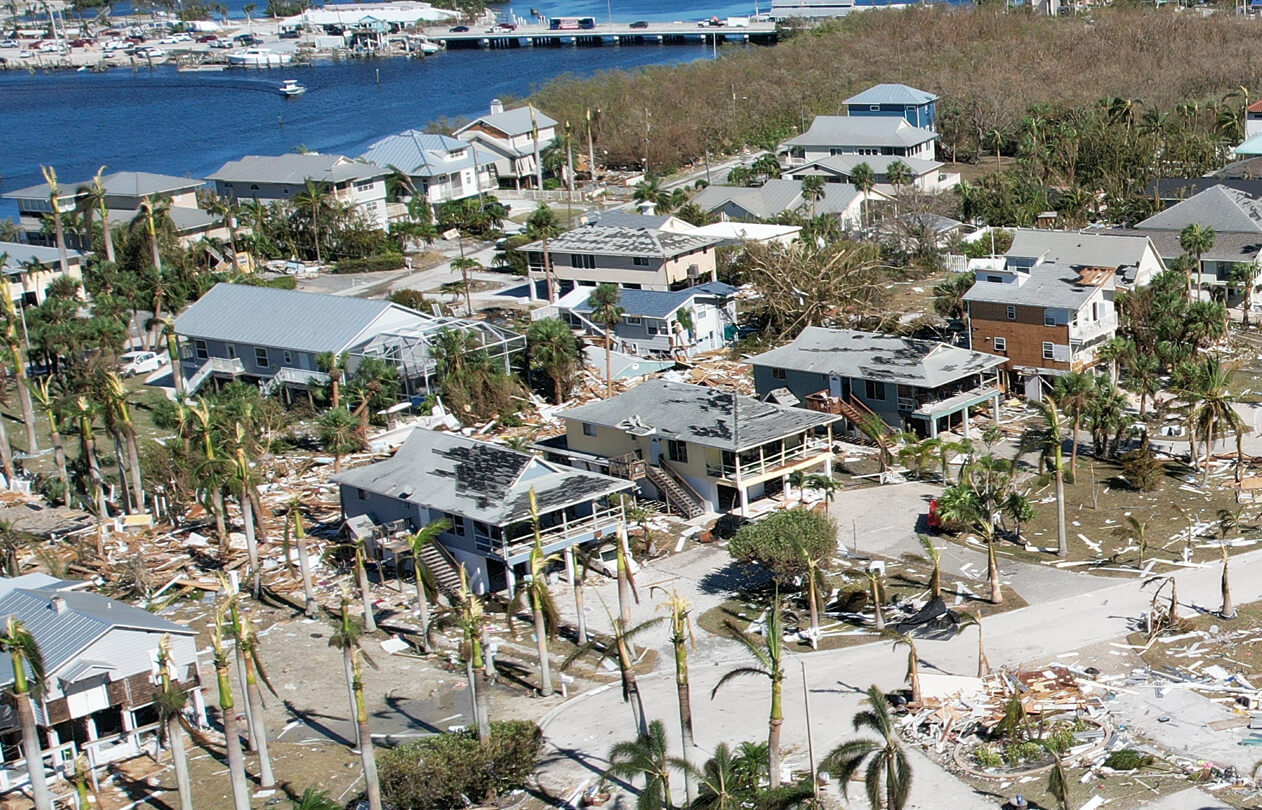The role of a Certified Emergency Manager (CEM) has become increasingly vital, with both natural and man-made disasters becoming more frequent and severe. A CEM is a professional who has demonstrated exceptional competence and a strong commitment to emergency management. In this article, we’ll delve into what it means to be a CEM, the steps to obtain this certification, and the importance of this designation for professionals in the field.
What is a Certified Emergency Manager (CEM)?
The Certified Emergency Manager (CEM) credential is awarded by the International Association of Emergency Managers (IAEM). This certification is designed to validate an individual’s expertise in all aspects of emergency management, from preparedness and response to recovery and mitigation. The CEM designation demonstrates a mark of professional excellence and a commitment to continuing education and professional development in the evolving field of emergency management.
Highlights of the CEM Credential
- Professional Certification: The CEM designation is a widely recognized certification in the emergency management field, symbolizing a high standard of professional achievement.
- Comprehensive Knowledge: It represents a deep understanding of emergency management principles, practices, and processes, ensuring that the holder is well-equipped to handle a broad range of emergencies.
- Global Recognition: The CEM credential is recognized internationally, making it an asset for professionals working across various sectors.
Basics of Obtaining a Certified Emergency Manager Certification

Obtaining a CEM requires a combination of education, experience, and professional development. Candidates must demonstrate a comprehensive understanding of emergency management principles and practices. The process requirements typically involve:
- Educational Background: Candidates need a strong educational foundation, often including a degree in emergency management or a related field.
- Practical Experience: Practical experience in emergency management is crucial. Candidates must show they have held positions with increasing levels of responsibility in the field.
- Continuing Education: The CEM process emphasizes the importance of ongoing learning. Candidates must engage in continuous professional development, attending workshops, training sessions, and conferences.
- Certification Exam: To earn the CEM designation, candidates must pass a rigorous exam that tests their knowledge of all aspects of emergency management.
Why is the CEM Certification Important?

Achieving the CEM designation is a significant step in ensuring emergency managers are equipped with the knowledge and skills needed to protect communities from disasters.
It holds significant importance for several reasons:
- Professional Excellence: The CEM designation sets a high standard for emergency management professionals, indicating a thorough understanding of the field. It distinguishes individuals as experts who are capable of handling complex emergencies and coordinating effective responses.
- Enhanced Skills and Knowledge: Earning the CEM credential requires ongoing education and professional development. This commitment helps CEMs stay current with the latest strategies, technologies, and best practices in emergency management.
- Global Applicability: The international recognition of the CEM designation allows professionals to work across various sectors and geographic locations. It provides a common standard that is respected worldwide, making it valuable for those seeking to expand their careers on a global scale.
- Enhanced Career and Networking Opportunities: Employers in both the public and private sectors recognize the CEM credential as a mark of excellence. Holding this certification can open doors to advanced career opportunities, leadership roles, and increased responsibilities within the emergency management community. CEMs are also a part of a global network of emergency management professionals, providing opportunities for collaboration and knowledge sharing.
Overall, a Certified Emergency Manager plays a crucial role in safeguarding communities and organizations against the growing threats of disasters. The CEM certification validates an individual’s expertise and reflects their dedication to advancing the field of emergency management.
How to Become a Certified Emergency Manager
Becoming a Certified Emergency Manager involves a rigorous process that includes meeting specific educational and professional experience requirements, completing an examination, and maintaining certification through continuing education.
Steps to Achieving CEM Certification
- Meet the Eligibility Requirements
- Education: A minimum of a bachelor’s degree is typically required. However, professionals with an associate degree combined with extensive emergency management experience may also qualify.
- Professional Experience: Candidates must have at least three years of comprehensive emergency management experience. This experience should encompass all phases of emergency management preparedness, response, recovery, and mitigation.
- Complete the Training and Professional Contributions
- Training: Candidates must complete 200 hours of emergency management training, with at least 100 hours dedicated to emergency management-specific topics. The remaining 100 hours can cover general management topics.
- Professional Contributions: Candidates must demonstrate their professional contributions to the field by participating in activities such as publishing articles, presenting at conferences, or teaching courses related to emergency management.
- Pass the CEM Examination
- Examination Format: The CEM exam is a multiple-choice test that assesses the candidate’s knowledge of emergency management principles, practices, and standards. It covers a wide range of topics, including risk assessment, disaster response, crisis communication, and resource management.
- Preparation: Candidates are encouraged to study IAEM’s recommended reading list, attend preparatory courses, and review the CEM study guide provided by IAEM.
- Submit a Comprehensive Emergency Management Essay
- Essay Requirements: Candidates must submit an essay that demonstrates their understanding and application of emergency management principles. The essay should focus on a specific aspect of emergency management, such as a successful mitigation project or a complex disaster response operation.
- Evaluation Criteria: The essay is evaluated based on the candidate’s ability to articulate their experience, the complexity of the project or operation, and the outcomes achieved.
- Maintain Certification Through Continuing Education
- Recertification Requirements: To maintain the CEM designation, professionals must recertify every five years. This involves completing additional training, continuing professional contributions, and demonstrating ongoing involvement in the emergency management field.
The Role of a Certified Emergency Manager
Certified Emergency Managers play a critical role in safeguarding communities from disasters. Their responsibilities span across all phases of emergency management and require a deep understanding of risk assessment, crisis communication, and resource coordination.
Key Responsibilities of a Certified Emergency Manager
- Risk Assessment and Planning: CEMs assess potential hazards and develop comprehensive emergency plans to mitigate risks and ensure community preparedness.
- Crisis Communication: During a disaster, CEMs are responsible for coordinating communication efforts, ensuring that accurate information is disseminated to the public and stakeholders.
- Resource Coordination: CEMs oversee the allocation and management of resources, including personnel, equipment, and supplies, to support disaster response and recovery efforts.
- Training and Exercises: CEMs organize and conduct training sessions and simulated exercises to prepare organizations and communities for potential disasters.
Real-Life Examples of Certified Emergency Managers

Certified Emergency Managers have demonstrated their value in numerous real-life scenarios, where their expertise and leadership have made a significant difference in disaster outcomes.
- Hurricane Response: After Hurricane Katrina in 2005, many emergency managers who held the CEM designation played pivotal roles in coordinating response efforts. Their expertise and training helped manage resources, coordinate with multiple agencies, and implement effective communication strategies, ultimately saving lives and minimizing the disaster’s impact. Their expertise and training helped manage resources, coordinate with multiple agencies, and implement effective communication strategies, ultimately saving lives and minimizing the disaster’s impact.
- Hurricane Recovery: Following Hurricane Sandy, CEMs in New York and New Jersey played key roles in coordinating evacuation efforts, managing emergency shelters, and overseeing recovery operations. Their actions helped protect vulnerable populations and expedite the rebuilding process.
- Wildfire Management: In California, CEMs have been instrumental in managing wildfire responses, coordinating efforts to protect communities, and implementing long-term mitigation strategies to reduce future risks.
- Pandemic Preparedness: During the COVID-19 pandemic, CEMs across the country were at the forefront of coordinating public health responses, managing vaccine distribution, and communicating critical information to the public.
Moving Forward in Emergency Management

Becoming a Certified Emergency Manager (CEM) is a significant achievement that demonstrates a professional’s dedication to excellence in emergency management. A CEM designation enhances career prospects and equips professionals with the knowledge and skills needed to protect communities from disaster impacts.
By understanding the steps to achieve certification and the responsibilities of a CEM, aspiring emergency managers can take the necessary steps to advance their careers and contribute to building safer, more resilient communities. At Tidal Basin, many of our team members hold this important credential, providing our clients with expert knowledge and skills throughout their projects. Learn how Tidal Basin can support your journey in emergency management or provide emergency management solutions.



